Music has always been a universal language, deeply rooted in the culture and history of every society. In the Philippines, it serves as a powerful medium for storytelling, celebration, and identity. This article delves into the fascinating journey of Filipino music, particularly its evolution under American influence.
From traditional folk tunes to modern genres, Filipino music reflects a rich blend of indigenous and foreign elements. The American era introduced new styles, such as blues, rock, and jazz, which seamlessly merged with local traditions. This fusion created a unique sound that continues to resonate today.
This guide offers a comprehensive look at how Filipino music has evolved, highlighting its historical milestones and cultural significance. Whether you’re a music enthusiast or a curious reader, this exploration will deepen your understanding of this vibrant art form.
Key Takeaways
- Filipino music is a blend of traditional and modern influences.
- American styles like blues and rock have shaped its evolution.
- Music plays a vital role in Filipino culture and identity.
- This article provides a historical and cultural perspective.
- Both traditional roots and modern innovations are explored.
Introduction to Filipino Music and American Influence
The story of Filipino melodies is a journey through time and culture. This article explores how American influence reshaped the nation’s musical landscape during the 20th century. From indigenous practices to modern innovations, the evolution of Filipino music reflects a rich blend of tradition and adaptation.
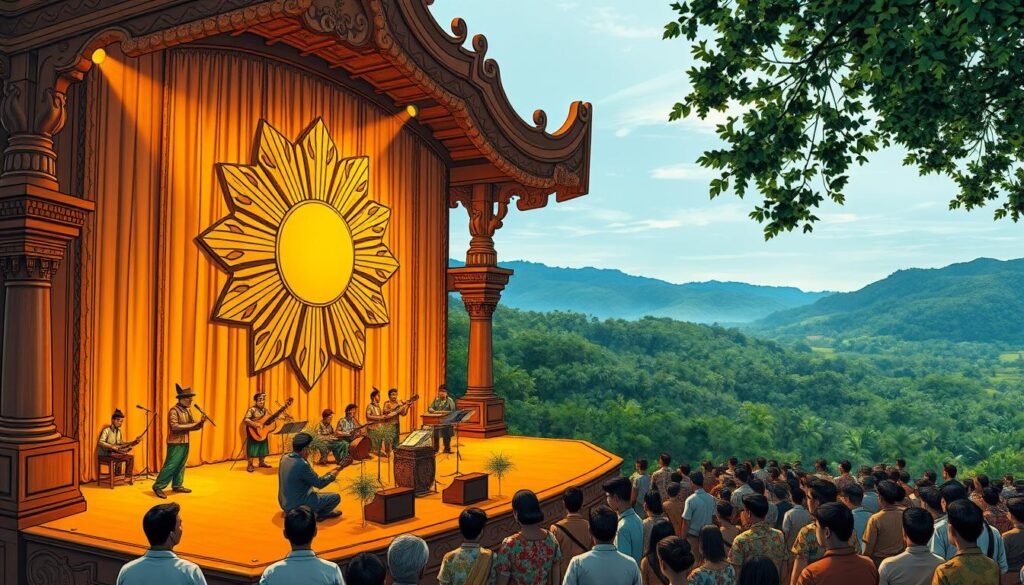
Before the 20th century, Filipino music was deeply rooted in indigenous rituals and storytelling. Traditional instruments like the kulintang and kudyapi were central to these practices. These sounds laid the foundation for a unique musical identity that would later evolve under foreign influence.
The American era brought significant changes. Genres like jazz, blues, and rock were introduced, blending seamlessly with local traditions. This fusion created a new sound that resonated across generations. The rise of AM radios and jukeboxes further popularized these styles, making them accessible to a wider audience.
Cultural shifts during this period also transformed performance styles. From informal folk gatherings to formal stages, Filipino musicians embraced new techniques. These changes not only enriched the nation’s musical heritage but also strengthened its cultural identity.
This article aims to provide a comprehensive look at these transformations. By exploring both history and modern trends, it offers insights into how Filipino music continues to evolve. Whether you’re a music enthusiast or a curious reader, this journey will deepen your appreciation for this vibrant art form.
Historical Roots of Filipino Traditional Music
The roots of Filipino traditional melodies stretch back to ancient times, shaped by indigenous practices. Long before foreign influences, these sounds were deeply tied to rituals, storytelling, and daily life. This section explores the rich heritage of Filipino music, focusing on its pre-colonial origins and regional diversity.
Pre-colonial Melodies
In pre-colonial Philippines, music was more than entertainment—it was a way of life. Indigenous groups like the Kalinga and Bontoc used songs for various life events. For example, “Tamuyong” was sung for married couples, while “Panubad” accompanied planting rituals. These melodies were often fluid, allowing singers to slide between notes, creating a unique and graceful sound.
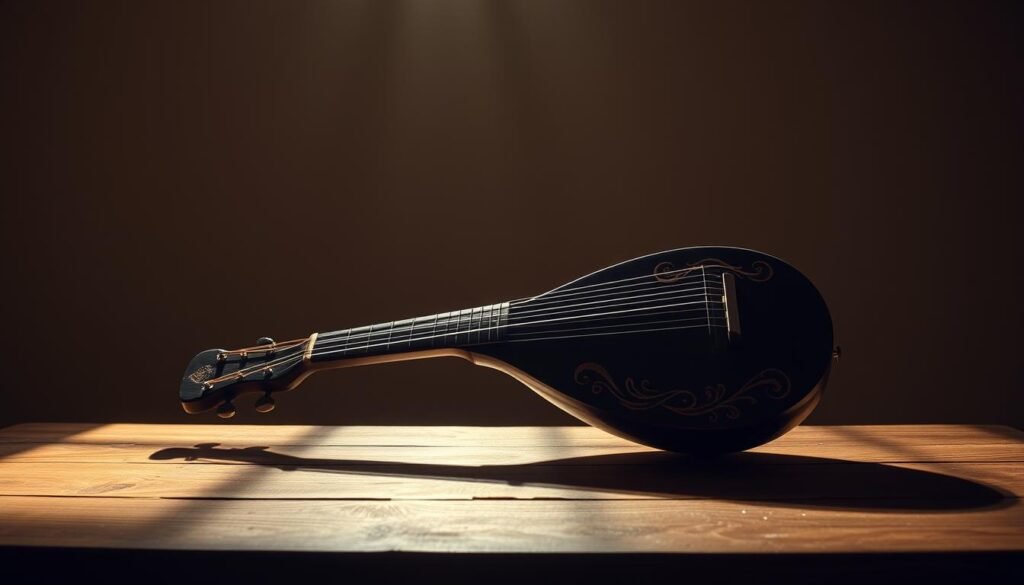
Regional Variations and Oral Traditions
With over 100 ethnolinguistic groups, the Philippines boasts a diverse musical landscape. Each region contributed its own instrument and song, preserving cultural knowledge through oral traditions. The kulintang, a set of gongs, and the kudyapi, a lute-like instrument, were central to these practices. These tools not only created distinct sounds but also connected communities.
Folk songs played a vital role in passing down stories and values. For instance, “Idoy, Uday” from the Waray region is a traditional song that has been adapted over generations. These oral traditions ensured that the essence of Filipino culture remained alive, even as external influences began to shape its evolution.
Early musical practices laid the groundwork for future innovations. The blending of indigenous and foreign elements created a unique melody that continues to resonate today. By understanding these roots, we gain a deeper appreciation for the richness of Filipino music and its enduring legacy.
American Colonial Impact on Filipino Music
The American colonial era marked a turning point in the evolution of Filipino artistic expression. From 1898 to 1946, the Philippines experienced significant cultural shifts under American rule. This period introduced new styles and techniques that reshaped the nation’s musical landscape.
One of the most notable changes was the introduction of Western classical music. This genre brought with it a focus on structured compositions and formal techniques. Filipino musicians began to adopt these elements, blending them with traditional melodies to create a unique style.
The influence of Western classical music also led to changes in musical aesthetics. New notes and scales were introduced, expanding the range of sounds available to composers. This allowed for greater experimentation and innovation in Filipino compositions.
Cultural Assimilation in the 20th Century
Cultural assimilation played a key role in this transformation. American colonialists promoted their own artistic traditions, encouraging Filipinos to adopt these practices. This led to a gradual shift in performance styles and musical education.
For example, the establishment of music conservatories during this period provided formal training in Western techniques. These institutions produced the first generation of Filipino composers who were skilled in both traditional and modern styles.
Changes in Musical Aesthetics
The introduction of new notes and scales allowed Filipino musicians to explore uncharted creative territories. This expanded the possibilities for composition, leading to a richer and more diverse musical heritage.
By the mid-20th century, Filipino music had evolved into a vibrant blend of tradition and innovation. This fusion continues to resonate today, reflecting the enduring impact of American colonial influence.
Innovations in Musical Instruments and Technology
The fusion of Western and Filipino sounds revolutionized the nation’s artistic expression. This era saw the integration of new instruments and groundbreaking advancements in sound recording. These changes not only enhanced the quality of melodies but also preserved the rich heritage of Filipino culture.
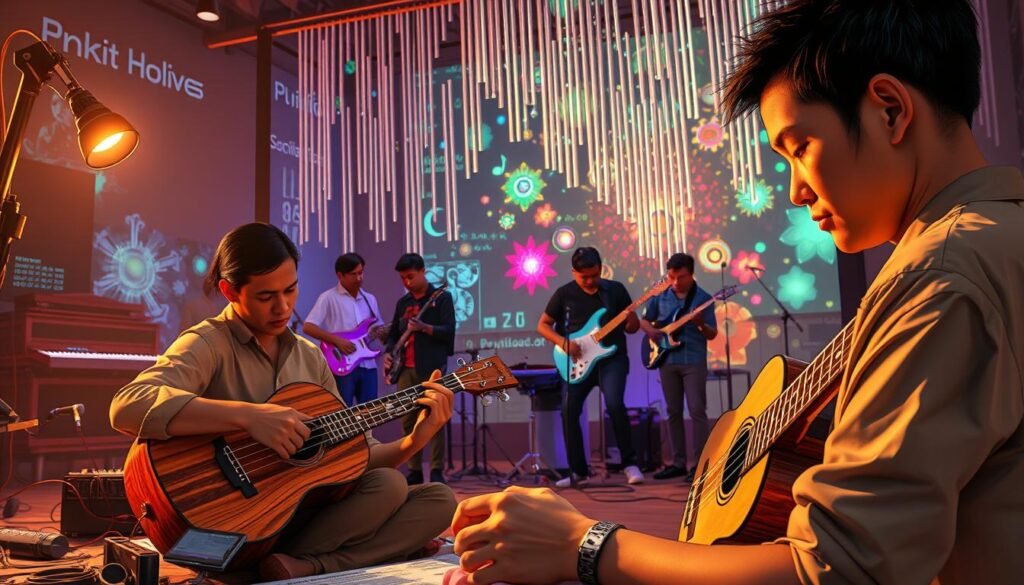
Integration of Western Instruments
Western instruments like the guitar, piano, and violin became staples in Filipino compositions. Their unique chord structures and tone added depth to traditional melodies. This blend created a fresh sound that resonated with audiences across generations.
For example, the guitar’s versatility allowed artists to experiment with new pitch ranges. This innovation expanded the creative possibilities for Filipino musicians, enabling them to craft more complex and emotive pieces.
Advancements in Sound Recording
Technological breakthroughs in sound recording transformed how melodies were captured and shared. Early recording devices paved the way for high-quality audio production. This allowed artists to preserve their work for future generations.
Modern recording tools offer precise control over tone and pitch, enhancing the overall sound quality. These advancements have made it easier for musicians to experiment and refine their craft.
From vinyl records to digital platforms, technology has played a vital role in shaping Filipino artistic expression. It ensures that the nation’s rich musical heritage continues to thrive in the modern era.
Evolution of Performance Styles and Venues
The way performances are presented has evolved dramatically over time. From intimate folk gatherings to grand concert stages, the shift reflects cultural and technological advancements. This transformation has reshaped how audiences experience and interpret artistic expressions.
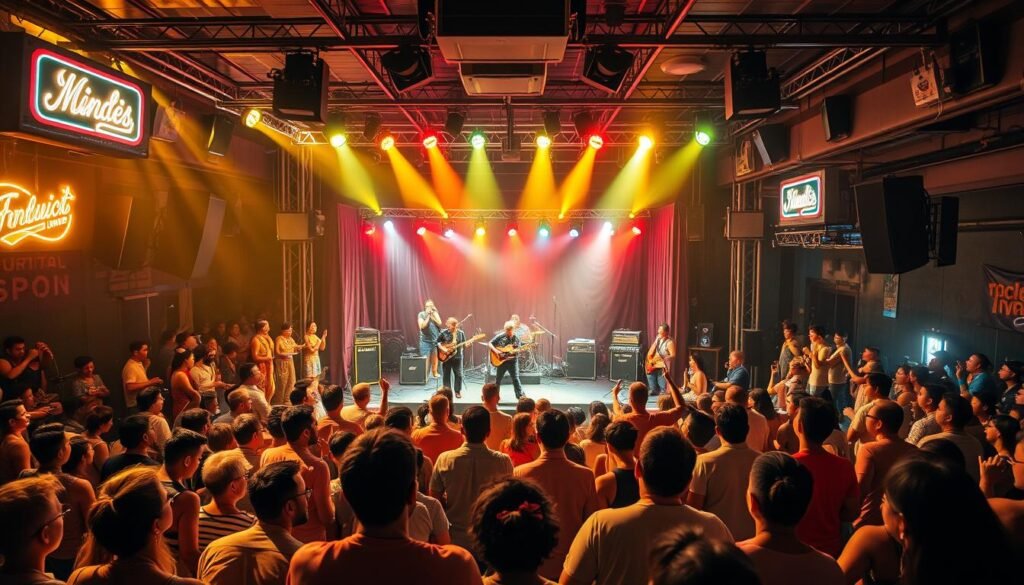
Transition from Folk Gatherings to Formal Stages
In the past, performances were often held in community settings. These informal gatherings allowed for a close connection between artists and audiences. The rhythm of traditional songs and dances was central to these events, creating a shared cultural experience.
As time progressed, performances moved to formal stages. This shift introduced new forms of artistic expression. Theatres and concert halls provided a structured environment, enhancing the overall view for the audience. This change also allowed for more complex productions and larger audiences.
Impact of Technology and Venue Design
Advancements in technology played a crucial role in this evolution. Modern sound systems and lighting enhanced the quality of performances. Venue design also adapted, offering better acoustics and seating arrangements. These improvements ensured that every detail of the performance could be appreciated.
- Informal gatherings fostered community bonds.
- Formal stages introduced structured performances.
- Technology enhanced sound and lighting quality.
- Venue design improved audience experience.
The social environment also influenced performance methods. As societies became more interconnected, artists began to explore new themes and styles. This led to a richer and more diverse artistic landscape, blending traditional and modern elements.
Today, performances continue to evolve, reflecting the dynamic nature of culture. From local festivals to international stages, the journey of Filipino artistic expression remains a testament to its enduring legacy.
Encountering Jazz, Rock, and Classical Music Trends
The blending of jazz, rock, and classical elements has reshaped Filipino artistic expression. These genres introduced new techniques and styles, creating a vibrant fusion that continues to influence modern compositions. From improvisation to energetic rhythms, each genre has left a unique mark on the nation’s sound.
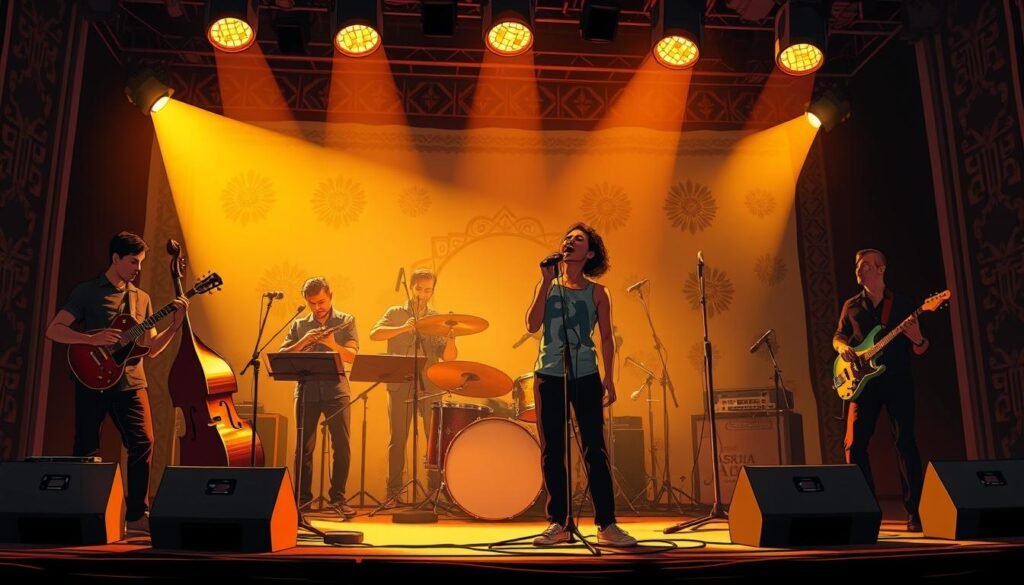
Jazz Influences and Improvisation
Jazz brought a fresh approach to Filipino compositions, emphasizing improvisation and creative freedom. Artists like Bobby Enriquez pioneered this style, blending local melodies with jazz’s complex harmony. This fusion allowed musicians to explore new sounds and push artistic boundaries.
Studies show that jazz musicians exhibit greater sensitivity to auditory changes, a skill that enhances their improvisational abilities. This adaptability has made jazz a cornerstone of modern Filipino artistic expression.
Rock’s Energetic Impact
Rock music introduced a high-energy, rebellious spirit to the Filipino scene. Bands like Juan de la Cruz Band became icons, blending rock’s raw power with local themes. This genre’s influence is evident in contemporary styles, where electric guitars and bold rhythms dominate.
Rock musicians often start their journey in their teens, dedicating hours to practice and performance. This dedication has helped shape a dynamic and enduring musical culture.
Revival of Classical Music Elements
Classical music has seen a resurgence in modern Filipino compositions. Artists like Ryan Cayabyab incorporate classical harmony and structure into their work, creating a bridge between tradition and innovation. This revival highlights the timeless appeal of classical techniques.
Classical musicians, often trained from a young age, bring precision and depth to their performances. Their influence ensures that the elegance of classical music remains a vital part of the nation’s artistic heritage.
| Genre | Key Characteristics | Impact on Filipino Music |
|---|---|---|
| Jazz | Improvisation, complex harmony | Encouraged creative freedom |
| Rock | Energetic rhythms, bold themes | Introduced rebellious spirit |
| Classical | Structured compositions, harmony | Revived traditional elegance |
“The fusion of jazz, rock, and classical elements has created a sound that is uniquely Filipino, blending tradition with modernity.”
These genres have not only enriched Filipino artistic expression but also fostered a sense of cultural identity. By embracing diverse influences, the nation continues to produce innovative and resonant compositions.
Transformation in Songwriting and Composition
The art of songwriting in the Philippines has undergone a remarkable transformation over the decades. From traditional ballads to modern hits, Filipino composers have blended indigenous and Western influences to create a unique sound. This evolution reflects not only artistic innovation but also the nation’s rich cultural heritage.

Evolution of Lyric Trends Across Decades
Filipino songwriting has evolved through distinct historical periods. Early compositions were deeply rooted in oral traditions, with lyrics often reflecting daily life and cultural values. As Western influences grew, composers began incorporating new themes and styles, creating a dynamic blend of old and new.
Modern Filipino compositions often explore universal themes like love, identity, and social issues. This shift reflects the changing priorities of society and the growing influence of global trends. The integration of musical theory has also played a key role, allowing composers to craft more complex and emotive pieces.
The role of the composer has been central to this transformation. From traditional folk artists to contemporary musicians, Filipino composers have pushed creative boundaries. Their work has not only shaped the nation’s musical identity but also inspired future generations.
Lyric trends have also evolved, reflecting societal changes. Early songs often featured simple, repetitive structures. Today, lyrics are more nuanced, blending poetic language with storytelling. This evolution has enriched the narrative depth of Filipino compositions, making them resonate with diverse audiences.
| Period | Lyric Trends | Impact |
|---|---|---|
| Pre-colonial | Oral traditions, cultural values | Preserved indigenous heritage |
| American Era | Western themes, structured forms | Introduced new styles and techniques |
| Modern Era | Universal themes, poetic language | Enhanced narrative depth and appeal |
The fusion of traditional and modern techniques has been a hallmark of Filipino songwriting. Composers like Ryan Cayabyab have masterfully blended indigenous melodies with Western theory, creating compositions that are both innovative and deeply rooted in tradition. This approach has ensured that Filipino music remains relevant and resonant in the modern era.
“The fusion of traditional and modern techniques has created a sound that is uniquely Filipino, blending heritage with innovation.”
As Filipino songwriting continues to evolve, it remains a powerful medium for cultural expression. By embracing both tradition and modernity, composers have crafted a musical legacy that reflects the nation’s rich history and vibrant future.
The Role of Music Notation and Theory
The integration of Western notation into Filipino melodies marked a pivotal shift in musical expression. This transformation not only introduced new techniques but also preserved the rich heritage of indigenous sounds. By blending traditional and modern practices, Filipino composers created a unique musical identity.
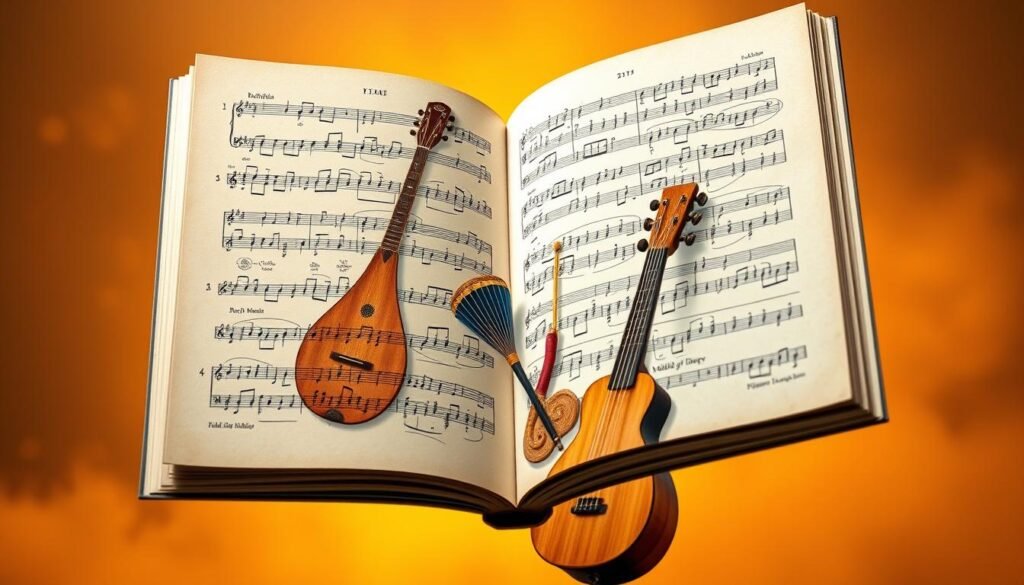
Adoption of Western Notational Practices
Western notation was introduced during the American colonial era, bringing structured methods to Filipino compositions. This system allowed for precise documentation of melodies, rhythms, and harmonies. Accurate music notation became essential in preserving cultural traditions while enabling innovation.
Educational reforms played a key role in this adoption. Conservatories and music schools began teaching Western techniques, ensuring that future generations could master both local and global styles. This shift laid the foundation for a hybrid musical culture.
Blending Indigenous and American Music Theory
The fusion of indigenous and Western scale systems created a dynamic soundscape. Filipino composers adapted Western scales to fit traditional melodies, resulting in a harmonious blend. This approach allowed for greater creativity and emotional depth in compositions.
Music theory underpins both composition and performance in this hybrid culture. By understanding the principles of harmony and rhythm, artists can craft pieces that resonate with diverse audiences. This blend of theory and tradition continues to shape Filipino music today.
- Western notation introduced structured methods for composition.
- Accurate notation preserved cultural heritage.
- Educational reforms supported the adoption of new techniques.
- Blending scales created a unique musical identity.
- Music theory enhances both composition and performance.
“The fusion of Western notation and indigenous practices has created a sound that is uniquely Filipino, blending tradition with innovation.”
This evolution highlights the enduring impact of notation and theory on Filipino music. By embracing both local and global influences, composers have crafted a legacy that reflects the nation’s rich history and vibrant future.
Cultural Shifts: Music and Social Change
Throughout history, artistic expression has been a powerful force in shaping societies. In the Philippines, creative works have not only entertained but also sparked conversations and driven social transformation. This section explores how performance art has served as a medium for change, reflecting societal issues and inspiring action.
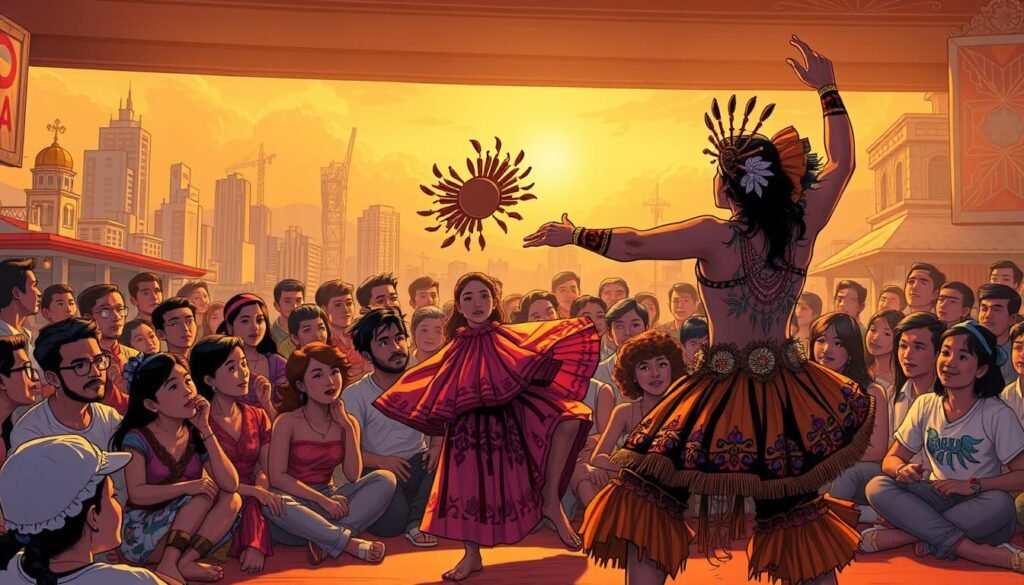
Music as a Tool for Social Commentary
Art has long been a mirror to societal challenges. In the Philippines, sound and its elements have been used to address pressing issues like inequality and injustice. For example, protest songs during the Marcos era became anthems for resistance, uniting communities in their fight for freedom.
Historical examples show how creative works influence public opinion. The rise of folk performances in the 1970s highlighted the struggles of marginalized groups. These events not only raised awareness but also encouraged collective action.
“Art has the power to challenge norms and inspire change, making it a vital tool for social commentary.”
Modern artists continue this legacy, using their platforms to address contemporary issues. From environmental concerns to mental health, creative works remain a powerful medium for advocacy. This enduring relevance underscores the role of art in shaping societal values.
- Performance art fosters community engagement and dialogue.
- The elements of sound and rhythm amplify emotional impact.
- Historical movements demonstrate the influence of art on public opinion.
- Modern artists use their platforms to address current social concerns.
For a deeper understanding of how art inspires change, explore this resource. It highlights the role of artists in empowering communities and driving social justice efforts.
Music: A Universal Language and Its Filipino Interpretation
Art transcends borders, and Filipino musicians have mastered the craft of blending tradition with global influences. This unique fusion has allowed Filipino art to resonate with audiences worldwide, showcasing the nation’s rich cultural heritage while embracing modern innovation.
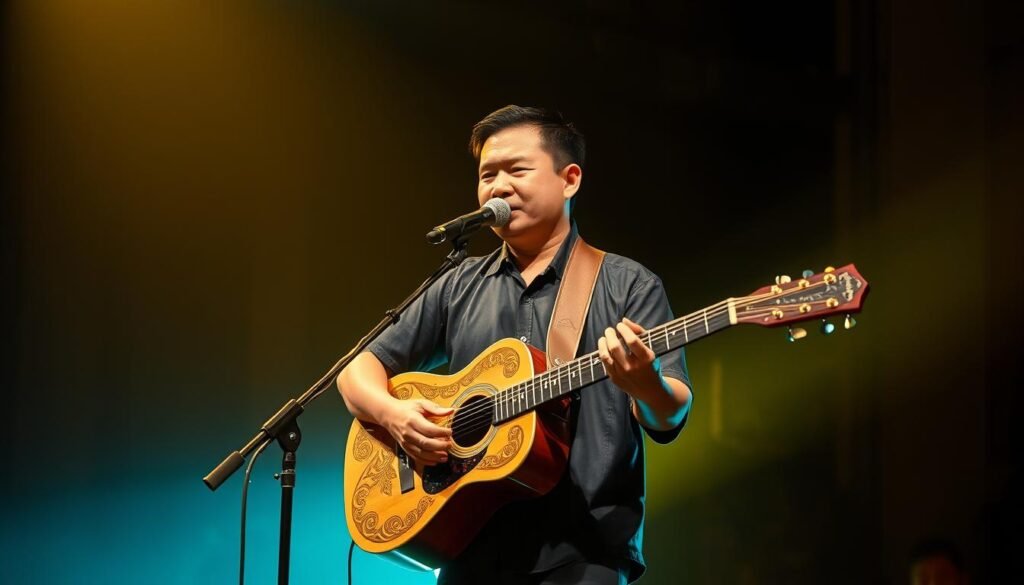
Harmony of Tradition and Innovation
Filipino singers and musicians play a pivotal role in conveying social and cultural messages. Through their work, they preserve local traditions while exploring new creative territories. This balance between heritage and modernity is a hallmark of Filipino art.
Notable artists like Lea Salonga and Ryan Cayabyab exemplify this fusion. Salonga’s international success with musicals like “Miss Saigon” highlights the global appeal of Filipino talent. Cayabyab’s compositions, blending traditional melodies with contemporary styles, showcase the depth of Filipino creativity.
“Filipino artists have a unique ability to weave their cultural identity into their work, making it universally relatable.”
The universal nature of art is evident in how Filipino artists connect with diverse audiences. Their ability to express universal emotions through local narratives has made Filipino art a powerful medium for cultural exchange.
- Filipino musicians blend traditional and modern sounds.
- Singers like Lea Salonga have achieved global recognition.
- Composers like Ryan Cayabyab bridge heritage and innovation.
- Filipino art serves as a universal language of expression.
By harmonizing tradition and innovation, Filipino artists continue to shape a vibrant and globally resonant cultural identity. Their work not only celebrates the nation’s heritage but also inspires future generations to explore the limitless possibilities of art.
Influence on Music Education and Institutional Growth
Educational reforms in the Philippines have significantly shaped its musical landscape. Over the centuries, the establishment of music schools and conservatories has played a crucial role in preserving and evolving the nation’s artistic heritage. These institutions have not only nurtured talent but also fostered a deeper appreciation for cultural traditions.
Founding of Music Schools and Conservatories
The early 20th century marked the founding of prominent music schools in the Philippines. Institutions like the University of the Philippines College of Music and the St. Scholastica’s College School of Music became centers of excellence. These schools introduced structured curricula, blending Western techniques with local traditions.
During this period, music education shifted from informal apprenticeships to formal training. This change allowed students to master both traditional and modern styles, creating a diverse and dynamic musical culture. The emphasis on structured learning also ensured the preservation of indigenous practices.
Role of Scholarships and Bursaries
Scholarships and bursaries have been instrumental in promoting diversity in music education. Programs like the National Music Competitions for Young Artists (NAMCYA) have provided opportunities for talented individuals, including women, to pursue their passion. These initiatives have helped bridge economic gaps and fostered inclusivity.
Financial aid has also encouraged students to explore innovative approaches to composition and performance. By supporting aspiring artists, these programs have enriched the nation’s musical heritage and ensured its continued evolution.
| Institution | Founded | Key Contribution |
|---|---|---|
| University of the Philippines College of Music | 1916 | Pioneered formal music education |
| St. Scholastica’s College School of Music | 1906 | Promoted classical and contemporary styles |
| NAMCYA | 1973 | Supported young talent through scholarships |
“Music education is not just about learning notes; it’s about preserving culture and inspiring future generations.”
The long-term benefits of structured music education are evident in the Philippines’ vibrant artistic scene. From traditional performances to modern compositions, the nation’s musicians continue to innovate while honoring their roots. For more insights into the therapeutic benefits of music education, explore this resource.
Modern Recording and Digital Distribution Effects on Filipino Music
The digital revolution has reshaped how Filipino artists create and share their work. Platforms like Spotify and YouTube have become essential tools for distributing and consuming melodies. This shift has democratized the industry, allowing creators to bypass traditional gatekeepers and connect directly with audiences.
Digital advancements have introduced new types of music, blending traditional Filipino sounds with global trends. Genres like indie pop and electronic beats have gained popularity, driven by the accessibility of digital tools. This evolution reflects the adaptability of Filipino artists in a rapidly changing landscape.
Impact of Digital Platforms on Music Accessibility
Streaming services have made it easier for listeners to discover and enjoy Filipino creations. With over 1 million followers on Spotify, bands like IV of Spades showcase the global appeal of Filipino talent. Digital platforms also provide valuable data, helping artists understand their audience and refine their craft.
Traditional recording methods, once limited by high costs and logistical challenges, have been replaced by modern digital techniques. Home studios and software like Ableton Live enable artists to produce high-quality work without expensive equipment. This shift has leveled the playing field, empowering independent creators.
- Streaming accounts for 38.4% of total recorded type music revenue globally.
- Digital platforms have reduced the environmental impact of production and distribution.
- Filipino artists can now reach international audiences without relying on major labels.
“The rise of digital platforms has given Filipino artists the tools to share their stories with the world.”
Case studies like the PhilPop music festival highlight the success of digital initiatives. With thousands of entries annually, the festival has become a platform for emerging talent. These efforts demonstrate the potential of digital tools to broaden audience reach and foster cultural exchange.
For more insights on how streaming is transforming the Philippine music industry, visit this resource. The digital era has not only revolutionized the way music is shared but also empowered Filipino artists to innovate and thrive in a global market.
Global Impact: Filipino Music on the World Stage
Filipino melodies have transcended borders, captivating audiences worldwide with their unique blend of tradition and innovation. Over time, artists from the Philippines have collaborated with international talents, bringing their rich cultural heritage to the global stage. This section explores how Filipino personalities and events have shaped the world’s musical landscape.
International Collaborations and Cross-Cultural Performances
Filipino artists have made significant strides through collaborations with global icons. Charice Pempengco, discovered by Oprah Winfrey, gained worldwide fame and even appeared on “Glee.” Her journey highlights how a person from the Philippines can achieve international recognition.
Another example is Bruno Mars, whose Filipino roots have inspired millions. His Grammy-winning career demonstrates the global appeal of Filipino talent. These collaborations not only showcase individual success but also promote the Philippines’ rich musical traditions.
Cross-cultural performances have also played a vital role. Artists like Sarah Geronimo have held sold-out concerts across Asia, blending Filipino and international styles. These events bridge cultures, creating a shared appreciation for diverse musical types.
Filipino Music Festivals and Global Reach
Festivals have become a powerful platform for showcasing Filipino talent. Events like the PhilPop Music Festival attract thousands of entries annually, fostering innovation and creativity. These gatherings highlight the diversity of Filipino melodies, from traditional folk songs to modern pop hits.
Groups like BINI and SB19 have gained international recognition, blending K-Pop and OPM elements. Their success reflects the growing influence of Filipino music on the global stage. Billboard’s ‘Global No. 1s’ series even recognized BINI as a top-charting artist, marking a pivotal time for the industry.
Initiatives like the Global Pinoy Music (GLOPM) project further amplify this impact. By collaborating local artists with global producers, GLOPM enhances cultural exchange and showcases the Philippines’ diverse musical expressions.
“Filipino music is not just a reflection of our culture; it’s a bridge that connects us to the world.”
From festivals to collaborations, Filipino music continues to inspire and resonate globally. Its ability to blend tradition with innovation ensures its enduring legacy on the world stage.
Celebrating Filipino Composers, Musicians, and Innovators
Filipino composers and musicians have carved a unique path in the world of sound, blending tradition with innovation. Their contributions have not only shaped the nation’s cultural identity but also left a lasting impact on the global stage. This section celebrates the trailblazers who have redefined Filipino artistic expression across different eras.
Spotlight on Trailblazing Artists
One of the most influential figures in Filipino music is Col. Antonino R. Buenaventura. Born in 1904, Buenaventura’s work spanned over six decades, leaving an indelible mark on the nation’s artistic landscape. His compositions, such as “Symphony in C,” introduced a unique texture to Filipino orchestral works, blending indigenous themes with Western techniques.
Buenaventura’s achievements extended beyond composition. As a conductor, he revitalized the Philippine Constabulary Band, elevating its status internationally. His dedication to preserving Filipino tradition while embracing innovation earned him the National Artist Award for Music in 1988.
“Buenaventura’s work is a testament to the power of blending cultural heritage with modern creativity.”
Another notable figure is Ryan Cayabyab, whose compositions have bridged the gap between classical and contemporary styles. His ability to infuse Filipino tradition into modern arrangements has made him a household name. Cayabyab’s work continues to inspire new generations of artists, proving that innovation can coexist with cultural roots.
| Artist | Contributions | Era |
|---|---|---|
| Col. Antonino R. Buenaventura | Pioneered orchestral compositions, revitalized bands | Early to mid-20th century |
| Ryan Cayabyab | Blended classical and contemporary styles | Late 20th to 21st century |
The University of the Philippines has also played a pivotal role in nurturing Filipino talent. Its centennial celebration, “100 Years of World Class Music showcased the institution’s legacy in shaping the nation’s artistic landscape. Events like these highlight the enduring influence of Filipino composers and musicians.
From Buenaventura’s orchestral masterpieces to Cayabyab’s modern arrangements, Filipino artists have demonstrated the power of blending tradition with innovation. Their work continues to inspire, proving that the nation’s artistic expression is as dynamic as its history.
Future Directions: Fusion and Innovation in Filipino Music
The future of Filipino artistic expression lies in the seamless fusion of tradition and cutting-edge innovation. As technology evolves, artists are finding new ways to blend cultural heritage with modern creativity, shaping a dynamic and globally resonant sound.
Emerging Trends in Composition
Modern composers are exploring innovative works that draw inspiration from traditional Filipino melodies. AI and machine learning tools are enabling artists to experiment with new sounds, creating compositions that are both unique and deeply rooted in cultural identity.
Streaming platforms are also playing a significant role in shaping these trends. Advanced algorithms tailor playlists to global audiences, increasing exposure for Filipino artists. This effect has allowed local talent to reach international stages, fostering cross-cultural collaborations.
Bridging Cultural Heritage with Modernity
Filipino artists are finding creative ways to integrate traditional musical instruments into contemporary genres. For example, the kulintang and kudyapi are being used in electronic and pop compositions, adding a distinct Filipino flavor to modern sounds.
Virtual reality (VR) and augmented reality (AR) are transforming live performances into immersive experiences. These technologies allow audiences to engage with Filipino culture in innovative ways, enhancing the emotional impact of each work.
- AI tools are revolutionizing composition and production processes.
- Streaming platforms are expanding the global reach of Filipino artists.
- Traditional musical instruments are being reimagined in modern genres.
- VR and AR are creating interactive and immersive performance experiences.
“The fusion of tradition and technology is not just a trend; it’s the future of Filipino artistic expression.”
As Filipino artists continue to innovate, they face both opportunities and challenges. The integration of technology offers endless possibilities, but it also requires careful navigation to preserve cultural authenticity. By embracing these changes, the Philippines is poised to remain a vibrant force in the global artistic landscape.
Conclusion
Filipino melodies have journeyed from traditional roots to modern innovations, reflecting a rich cultural evolution. The American influence introduced new styles like jazz and rock, blending seamlessly with local traditions. This fusion created a unique sound that resonates globally.
Art serves as a universal language, and the Filipino interpretation highlights its power to connect cultures. From indigenous instruments to digital platforms, the nation’s creative expression continues to thrive. It bridges heritage with modernity, offering a vibrant narrative of identity.
As Filipino artists embrace emerging trends, their work gains recognition on the world stage. By appreciating both historical traditions and modern innovations, we celebrate a dynamic future. Explore more about this journey in this insightful resource.
FAQ
How did American influence shape Filipino music in the 20th century?
American colonial rule introduced Western instruments, styles like jazz and rock, and formal music education, blending traditional Filipino melodies with modern elements.
What were the key changes in Filipino musical aesthetics during the American era?
The era saw a shift from oral traditions to written notation, the adoption of Western harmonies, and the integration of genres like jazz and classical music into local compositions.
How did technology impact Filipino music under American influence?
Advancements in sound recording and the introduction of Western instruments allowed Filipino artists to experiment with new sounds and reach broader audiences.
What role did music play in Filipino social change during this period?
Music became a powerful tool for social commentary, reflecting societal issues and fostering a sense of national identity amidst cultural assimilation.
How did Filipino musicians blend indigenous and Western music theories?
They adopted Western notational practices while preserving traditional scales and rhythms, creating a unique fusion that honored their heritage.
What global impact has Filipino music achieved in recent decades?
Filipino artists have gained international recognition through collaborations, festivals, and digital platforms, showcasing their rich cultural heritage on the world stage.
Who are some notable Filipino composers and musicians from this era?
Trailblazers like Nicanor Abelardo and Ryan Cayabyab blended traditional Filipino elements with Western styles, leaving a lasting legacy in the music industry.
What are the emerging trends in Filipino music today?
Modern Filipino artists are exploring fusion genres, digital production, and cross-cultural collaborations, bridging their heritage with contemporary innovation.
Source Links
- Music in the Philippines since 1898 – National Commission for Culture and the Arts
- Music of the Philippines
- Evolution of Filipino Music: Spanish to American Colonization Influence
- Westernized Musical Traditions in the Philippines – National Commission for Culture and the Arts
- America’s Influence in the Philippines
- The History of Music in Filipino Culture – Chords For A Cause %using the endless possibilities of music to improve lives through volunteering, fundrasing and researc%
- Philippine folk music
- Filipino American music
- Philippine Music, A Historical Overview – National Commission for Culture and the Arts
- Musical instrument – Technology, Development, Evolution | Britannica
- Strings and Synths: Innovations in Musical Instrument Design
- Performance Art Movement Overview
- Theatre – Evolution, Production, Design | Britannica
- Frontiers | Auditory Profiles of Classical, Jazz, and Rock Musicians: Genre-Specific Sensitivity to Musical Sound Features
- Auditory Profiles of Classical, Jazz, and Rock Musicians: Genre-Specific Sensitivity to Musical Sound Features
- 10 Tips for Composing Your Own Music
- ChatGPT and the Music Industry: Transforming Songwriting and Production
- Songwriting and Transformation: The Subjective Experience of Sharing Self Through Song
- The Role of Music Theory in Music Production | RMCAD
- Musical notation
- Rock – Social Change, Cultural Evolution, Music Revolution | Britannica
- Subcultures, Popular Music and Social Change – Cambridge Scholars Publishing
- Music is a universal language: Pope Francis sings praises of Catholic choirs | Catholic News Philippines | LiCAS.news Philippines | Licas News
- Schopenhauer and the Universal Language of Music
- Music | Art Form, Styles, Rhythm, & History | Britannica
- Frontiers | Exploring the Impact of Music Education on the Psychological and Academic Outcomes of Students: Mediating Role of Self-Efficacy and Self-Esteem
- Exploring the Impact of Music Education on the Psychological and Academic Outcomes of Students: Mediating Role of Self-Efficacy and Self-Esteem
- The fall and rise of Philippine music – BusinessWorld Online
- From Analog to Digital: The Evolution of Music through Technology
- The Rise Of Filipino Pop Music On The Global Stage – FasterCapital
- BINI: Making A Global Impact & Spreading Filipino Music In 2024 | Billboard Global No. 1s
- 5 Composers/1 Theme: A Filipino American Composition Project
- Marching Echoes: The Legacy of Antonino R. Buenaventura (1904-1996) –
- OPM and its importance to Filipino culture
- The Future of OPM is Here. Discover How Technology is Transforming Filipino Music! – Science Magazine
- Conclusion (music)
- Conclusion Of Music Essay – 1047 Words
- Part 5: Conclusion — ORCA

